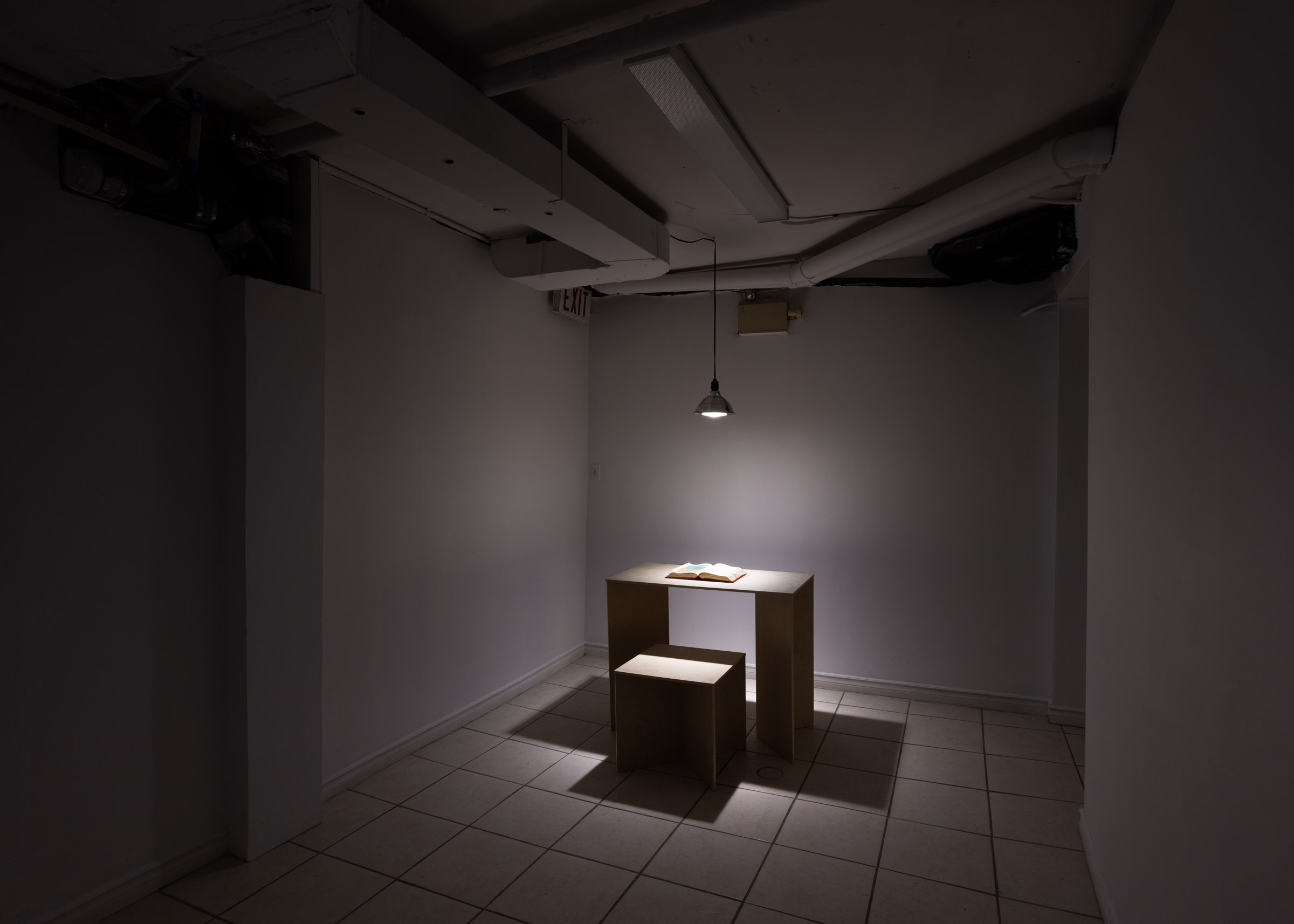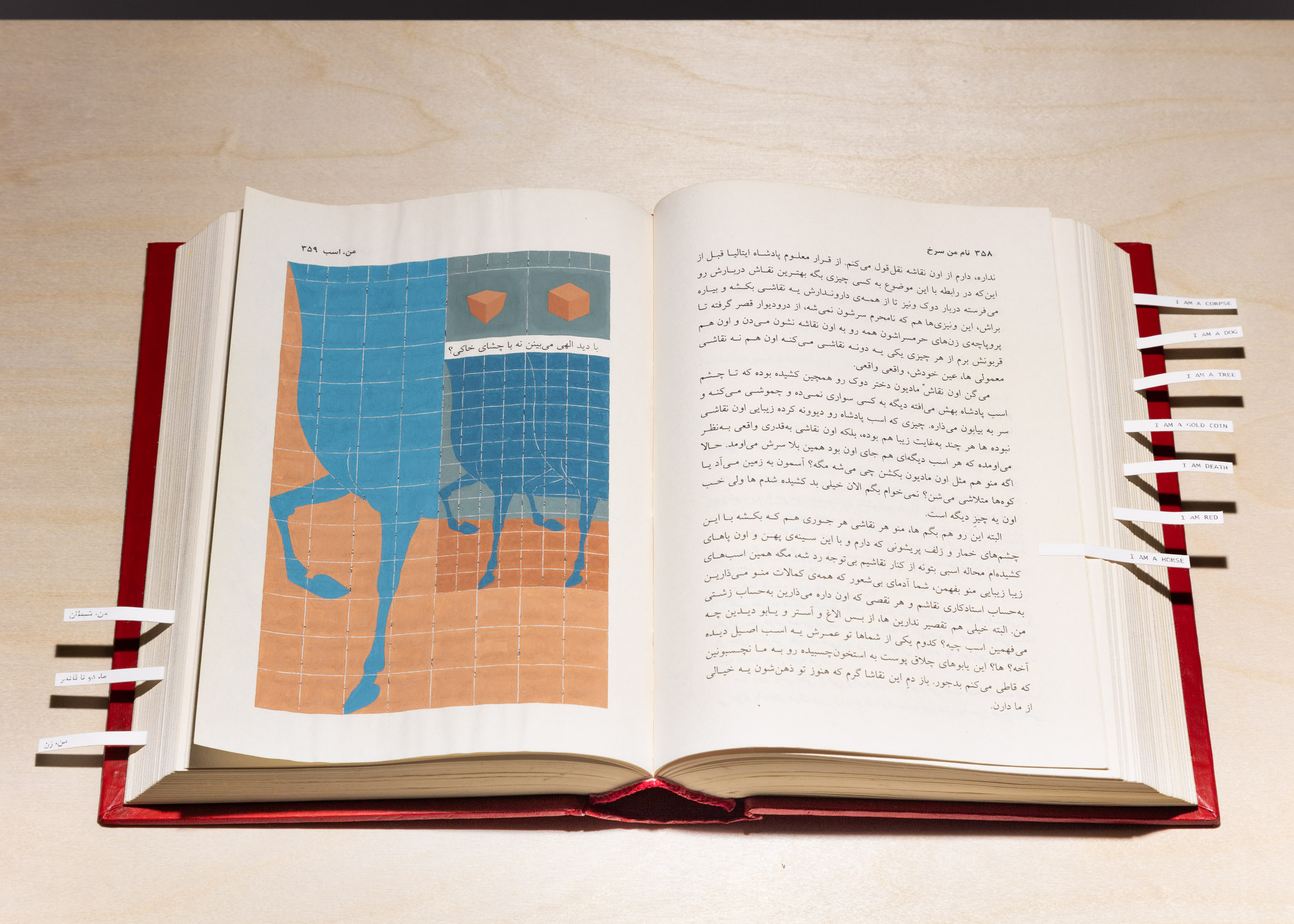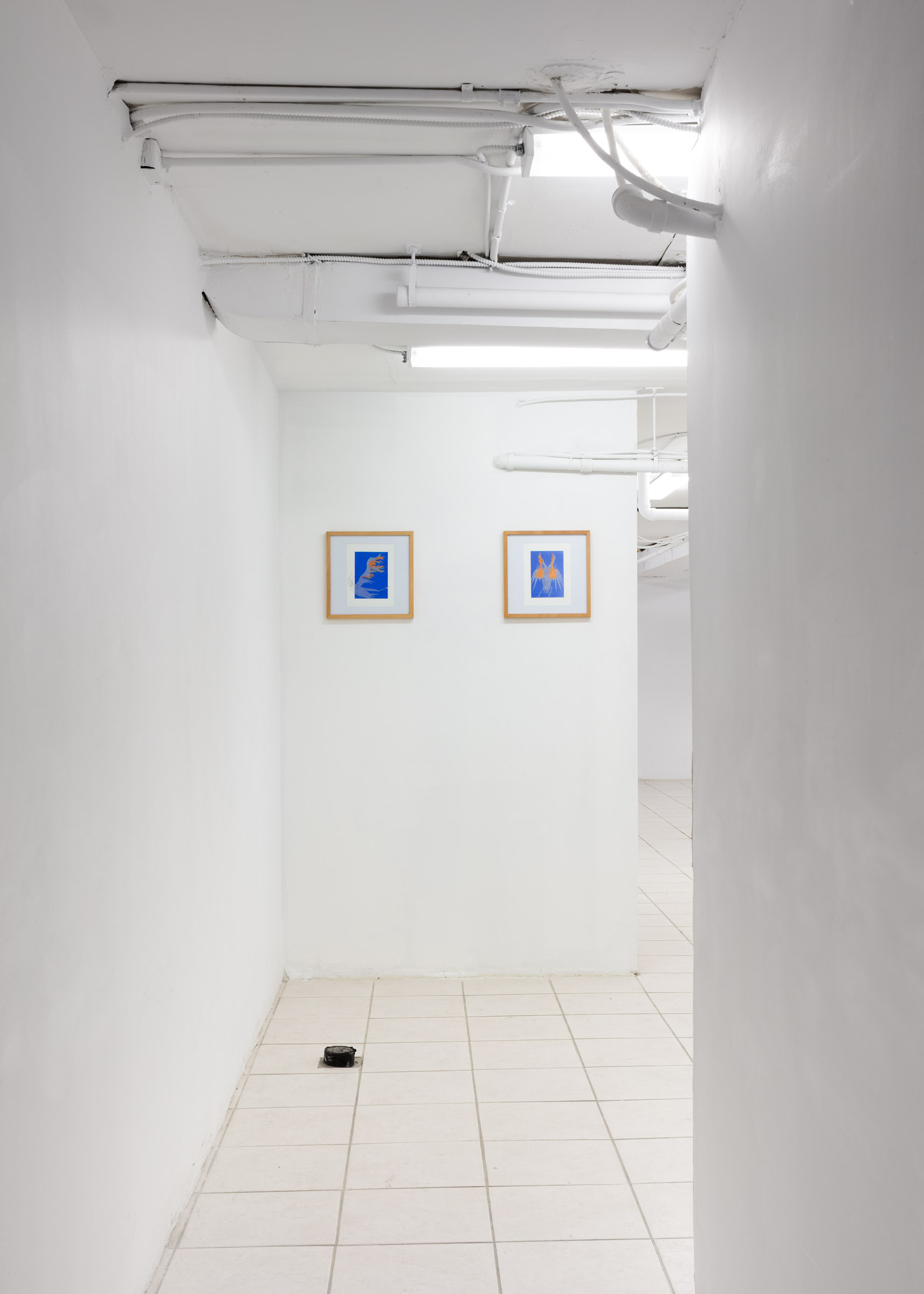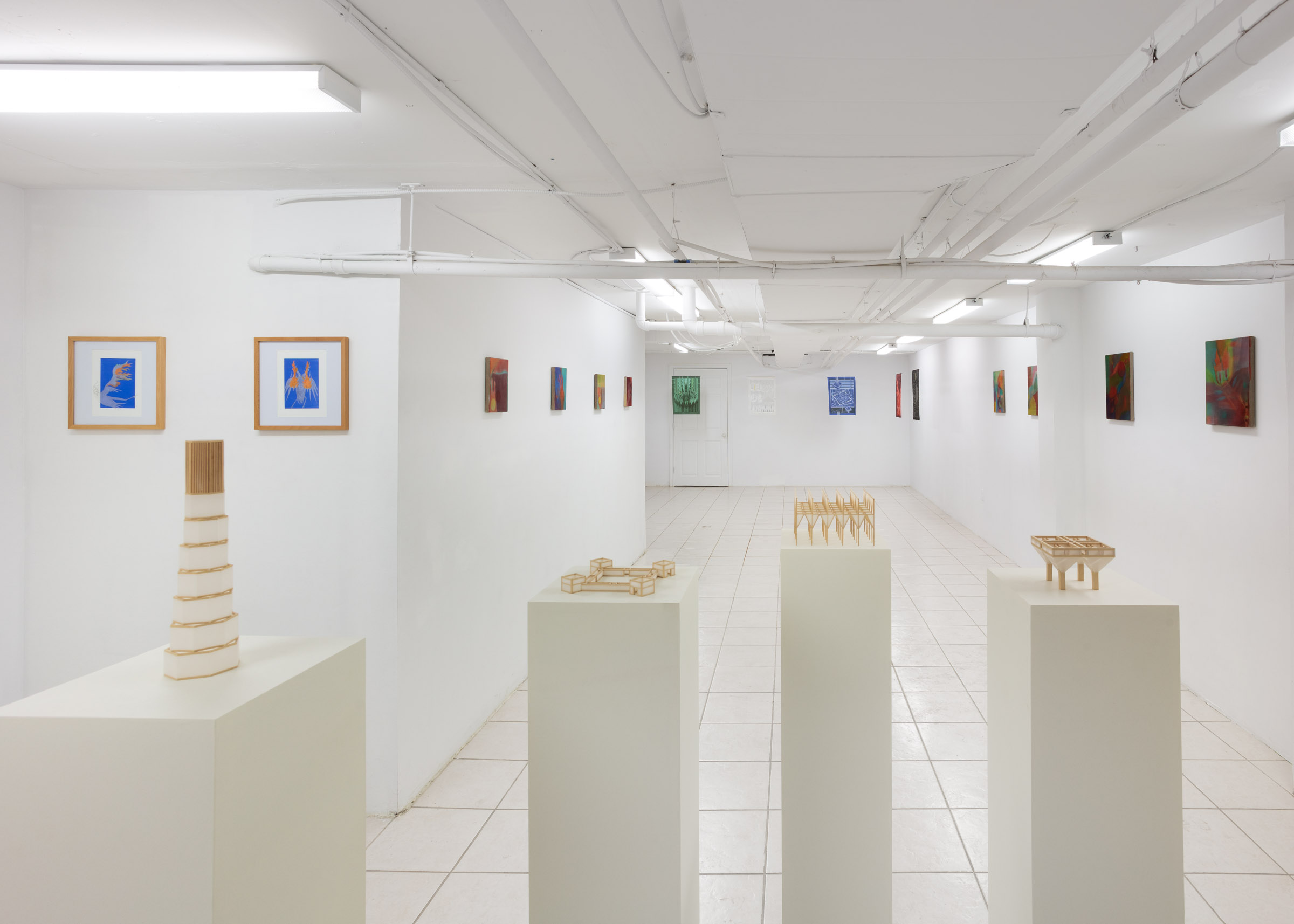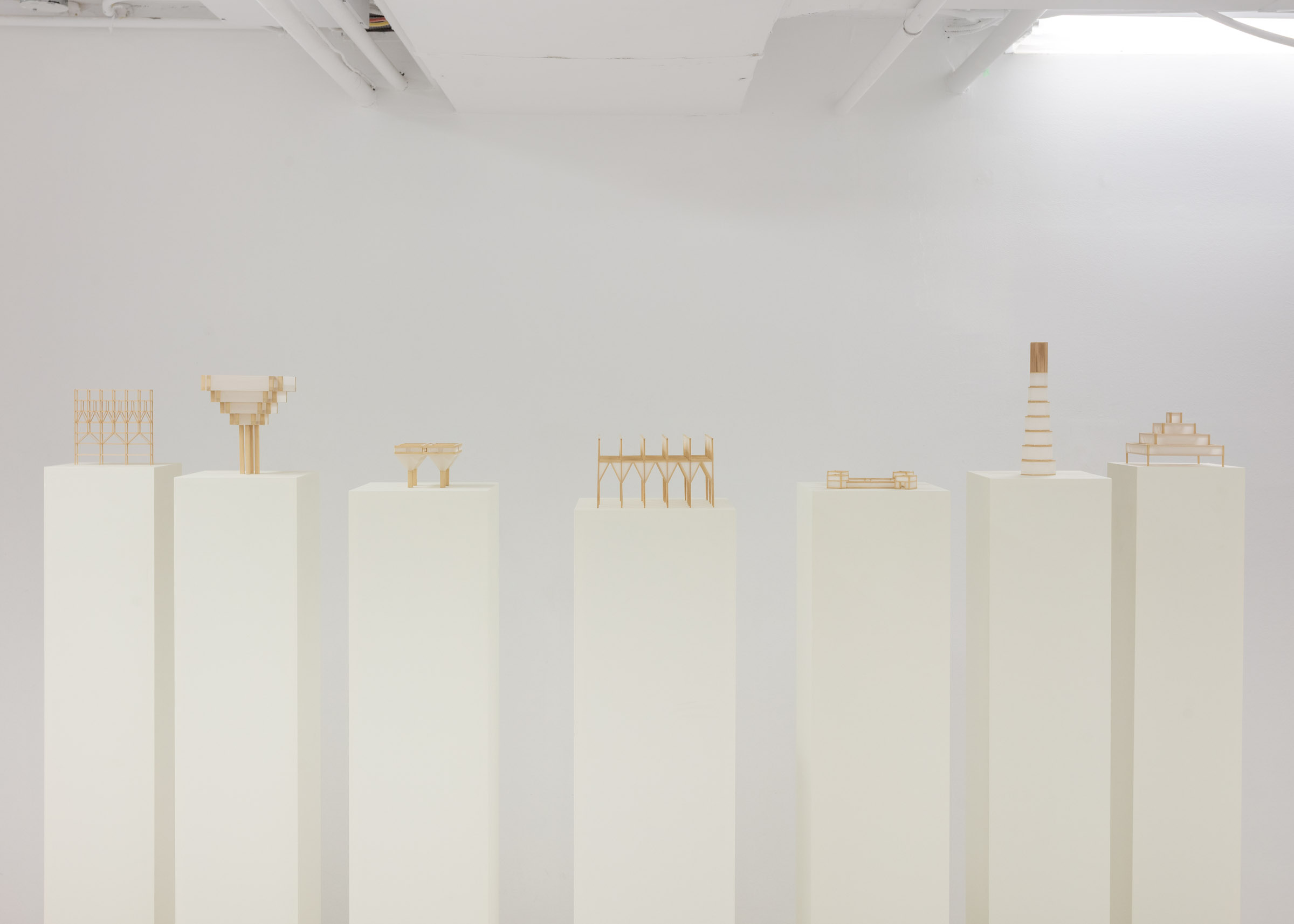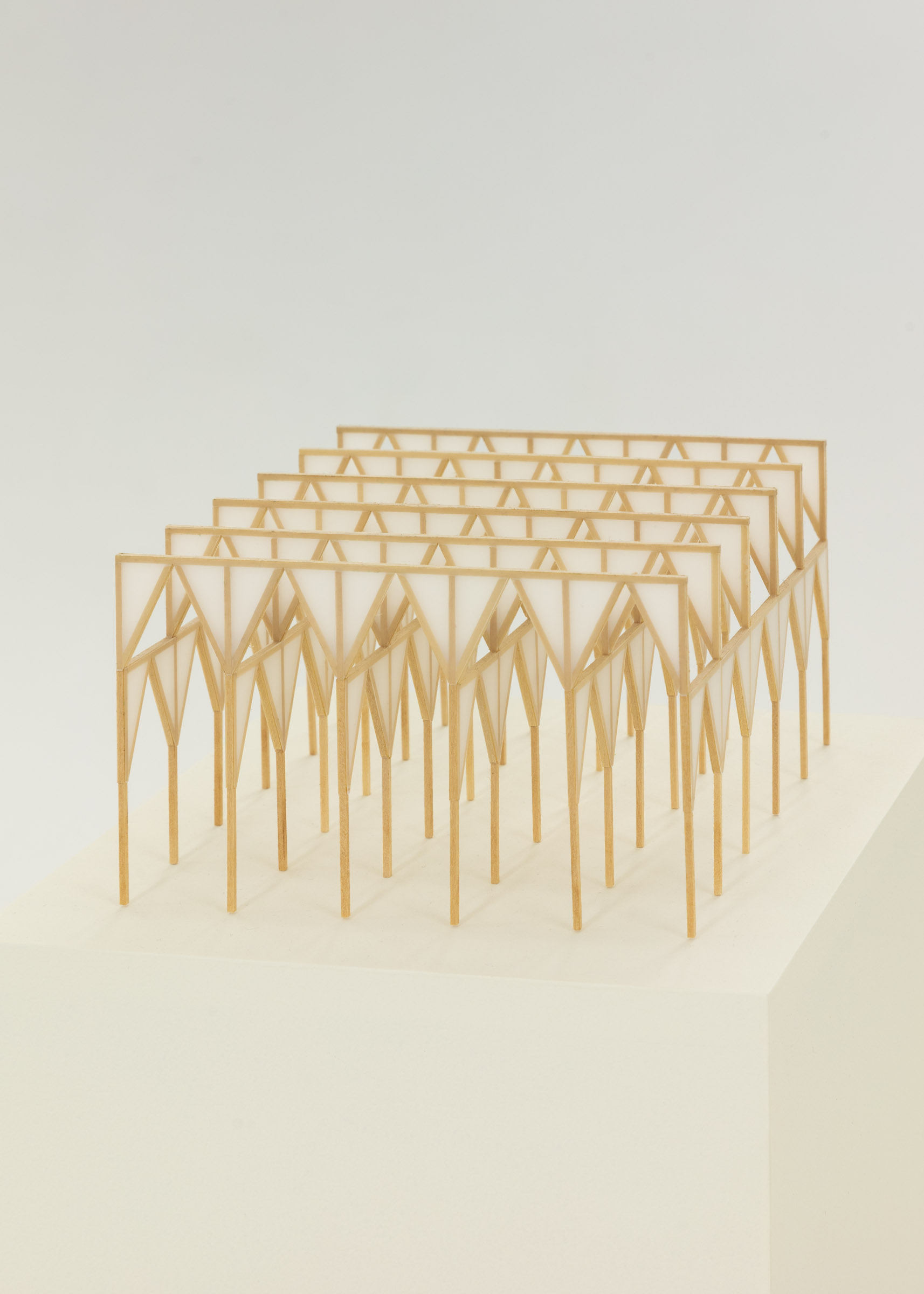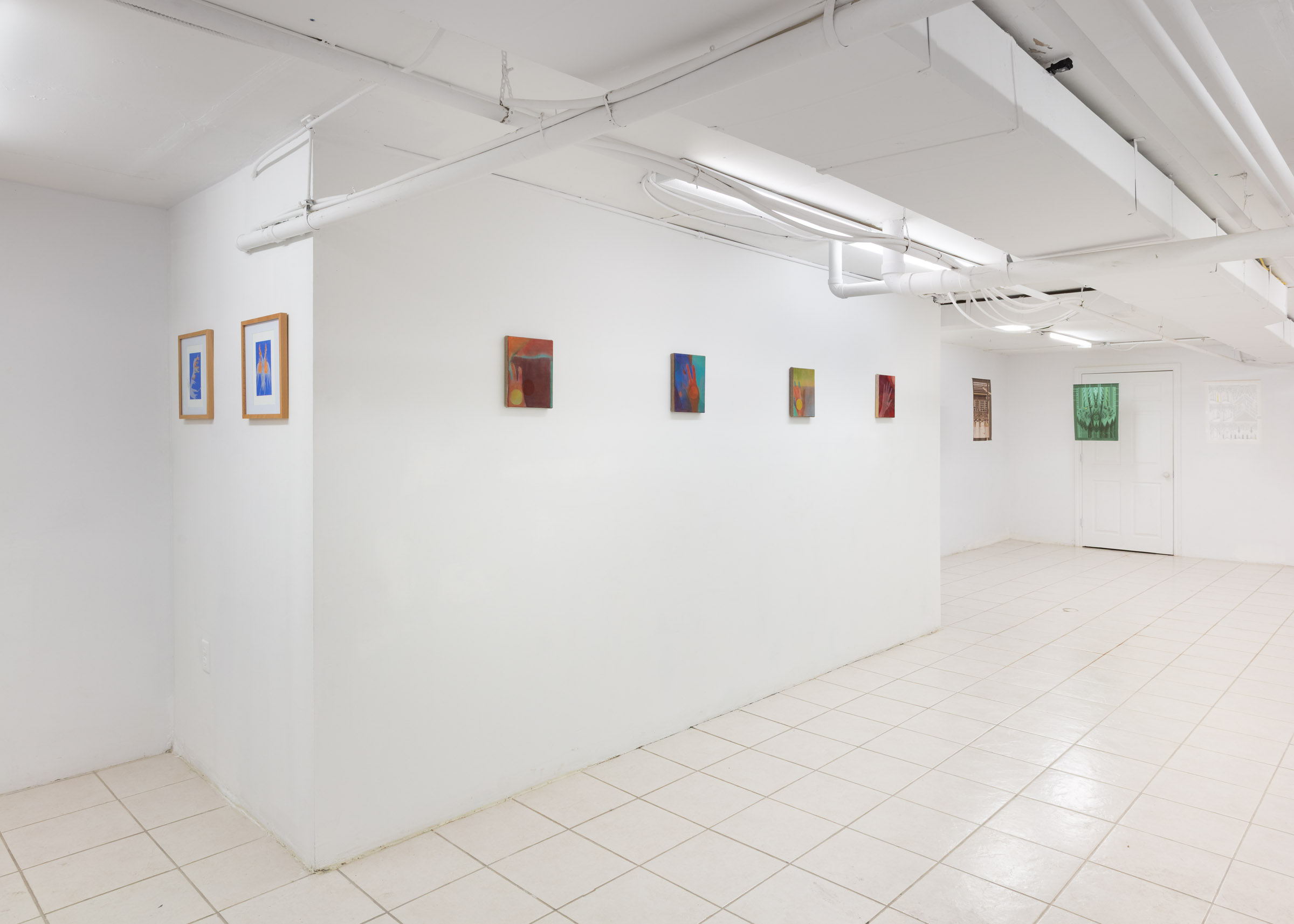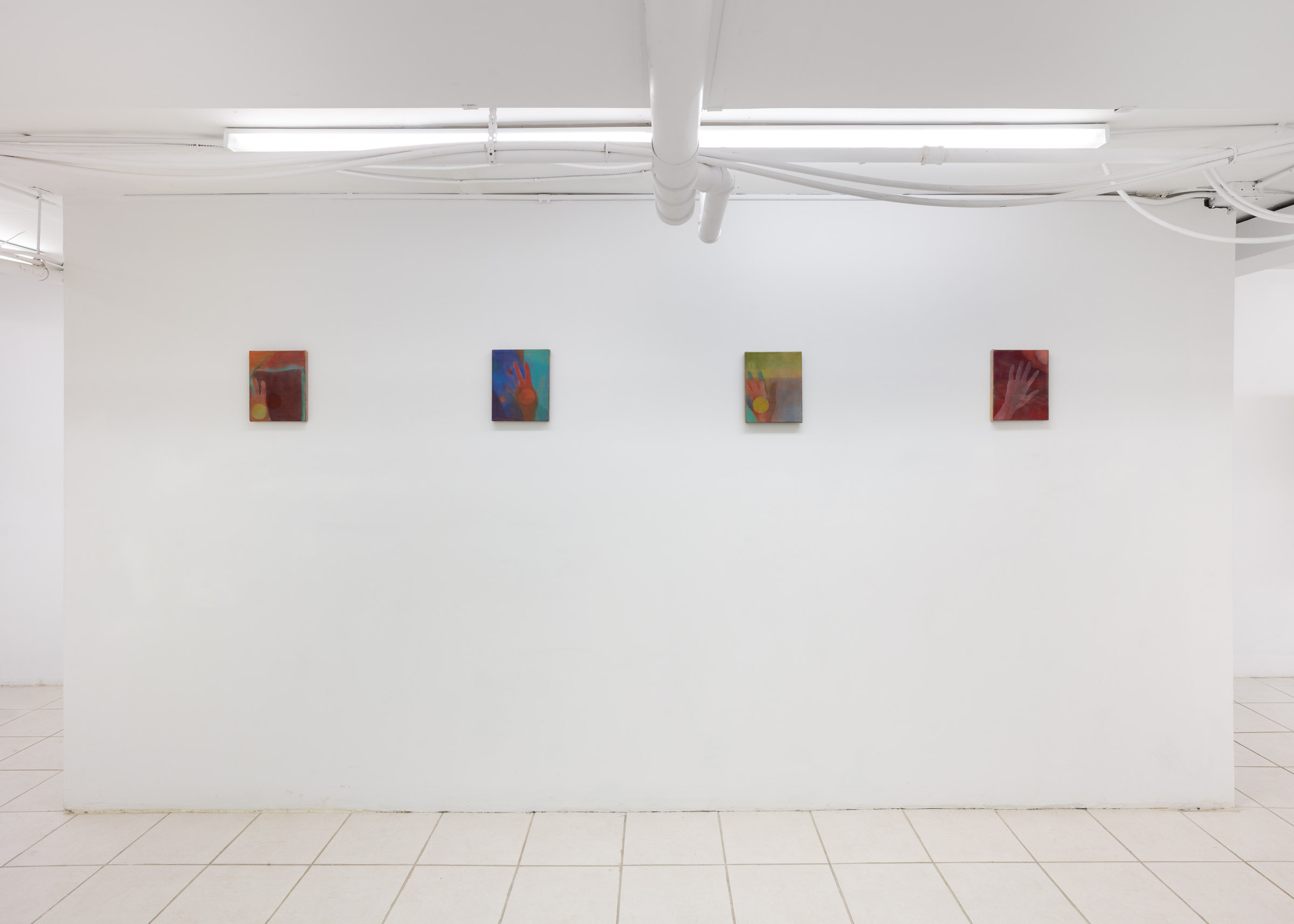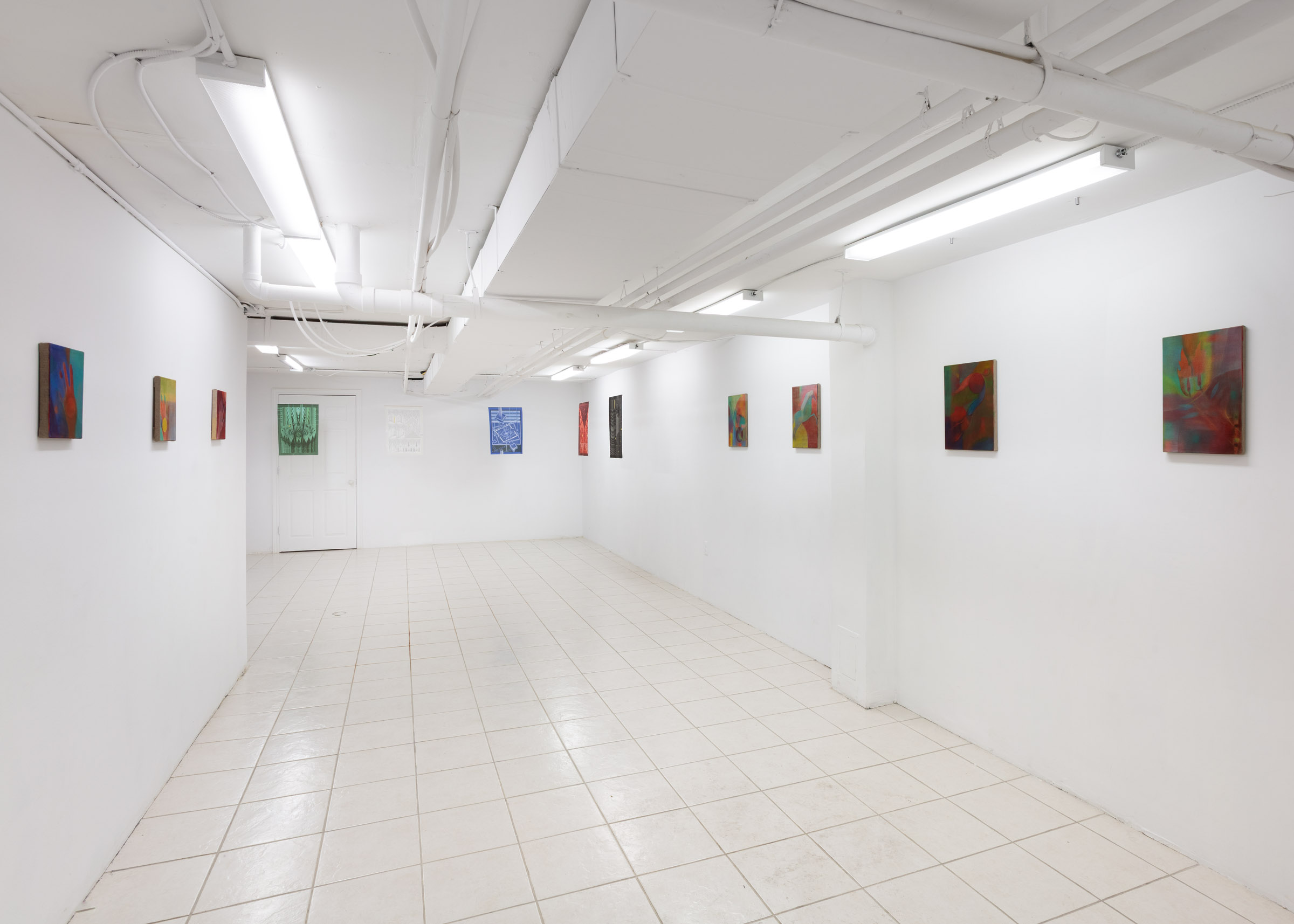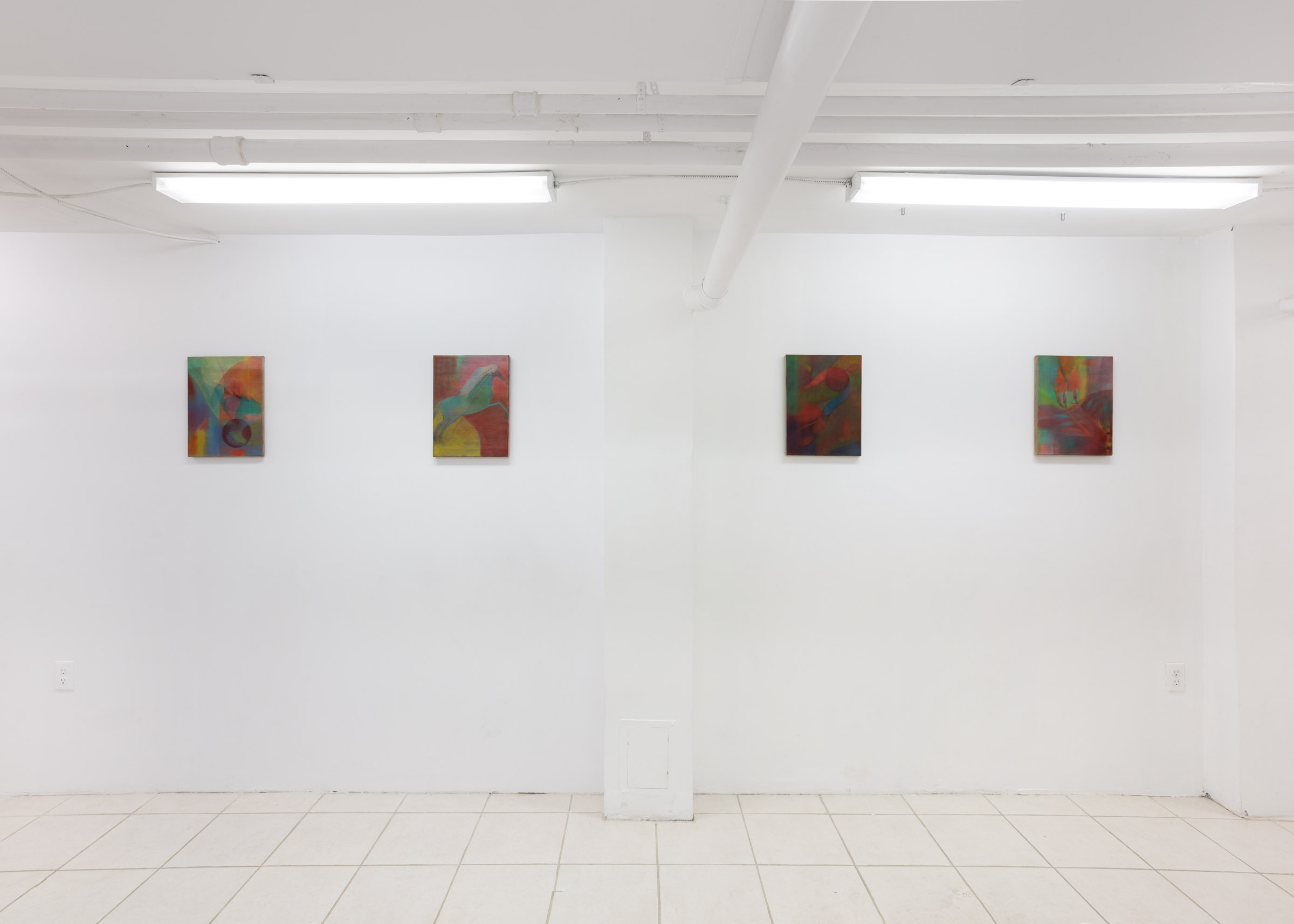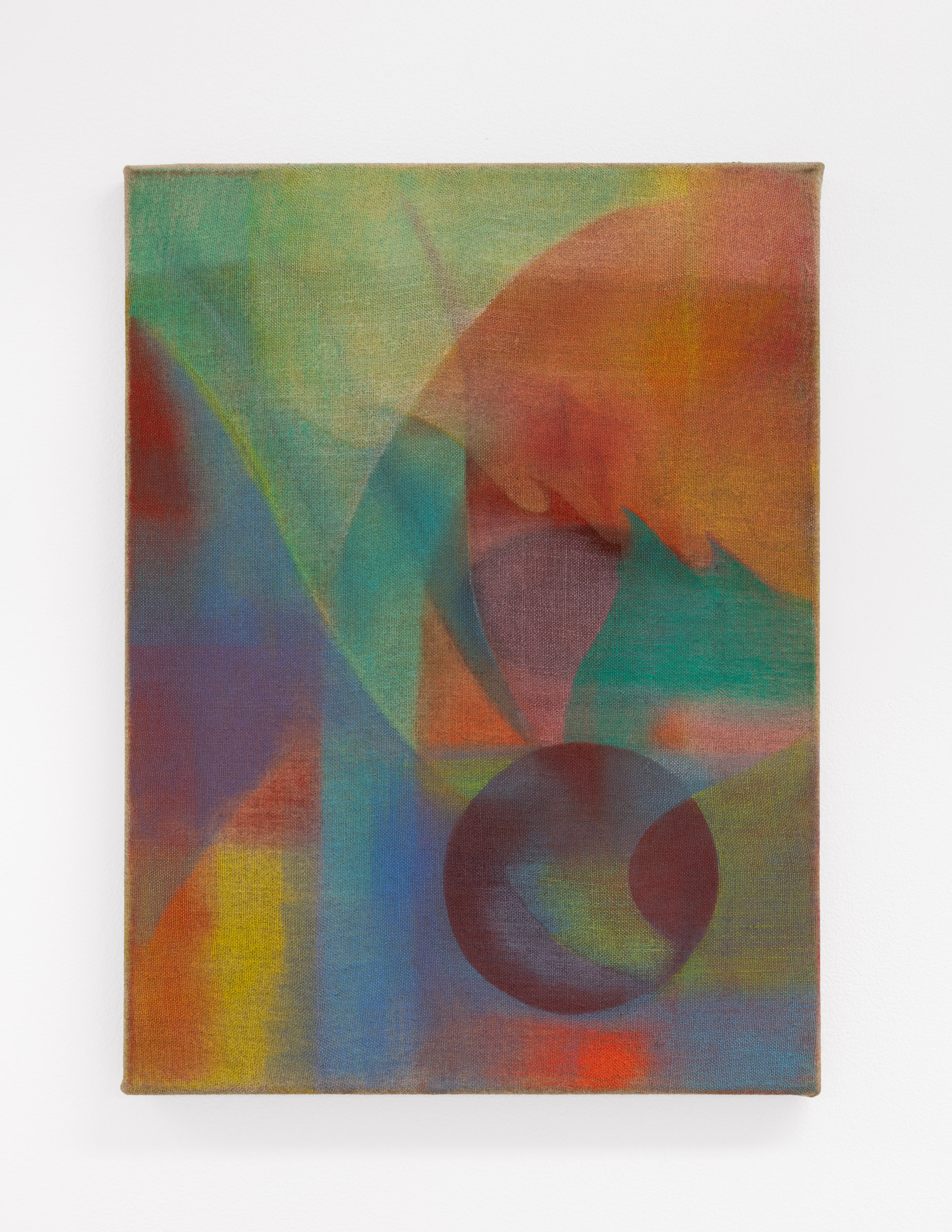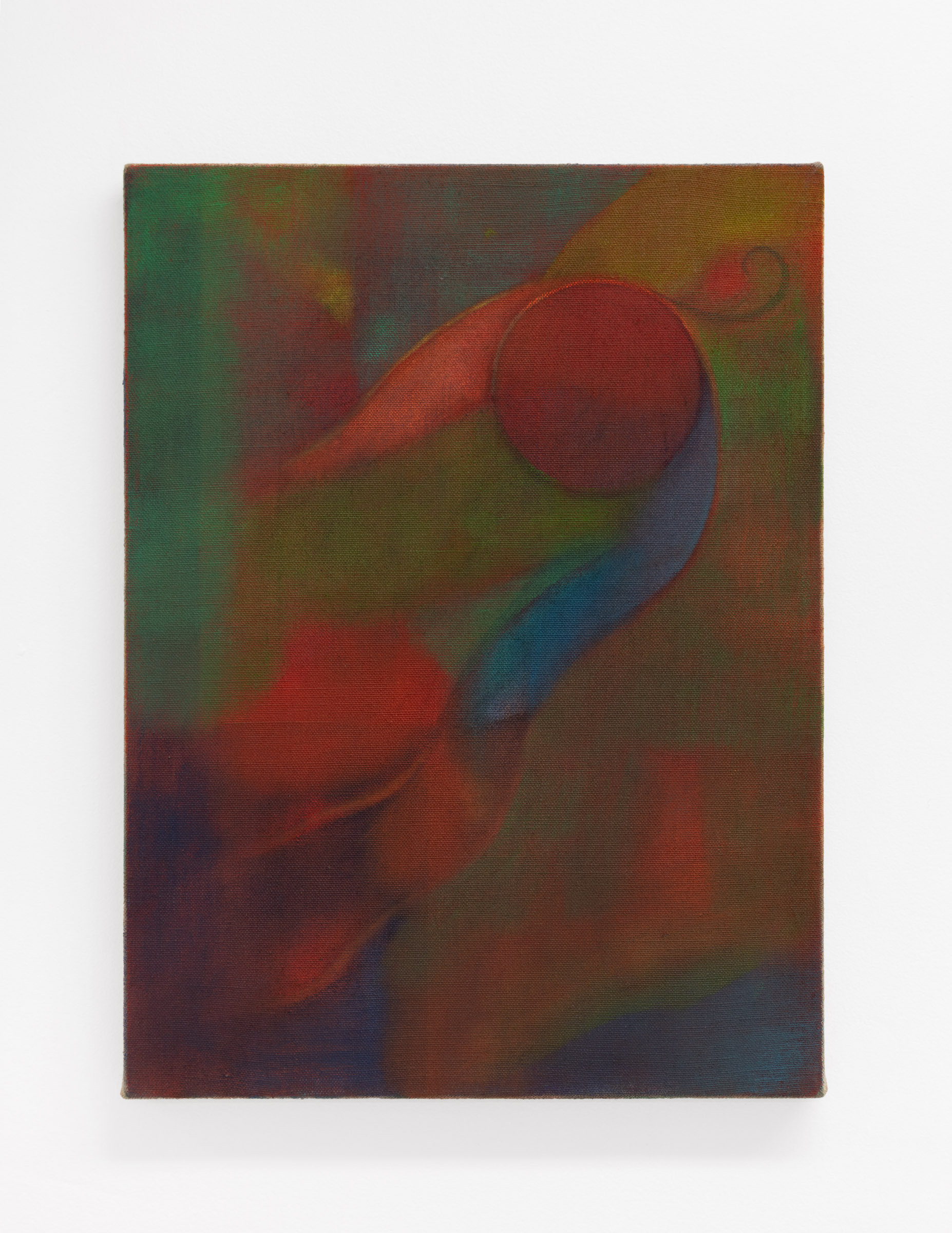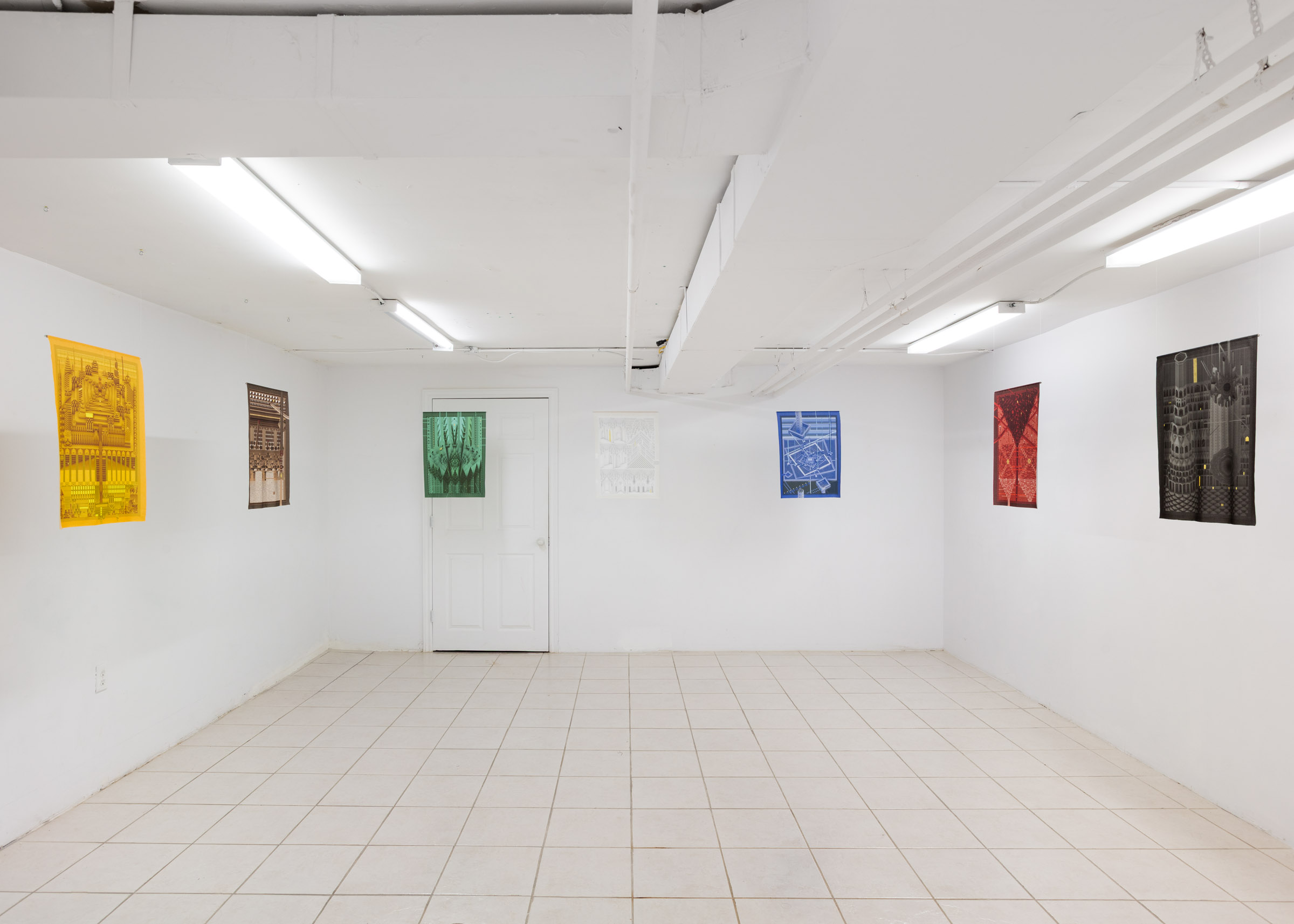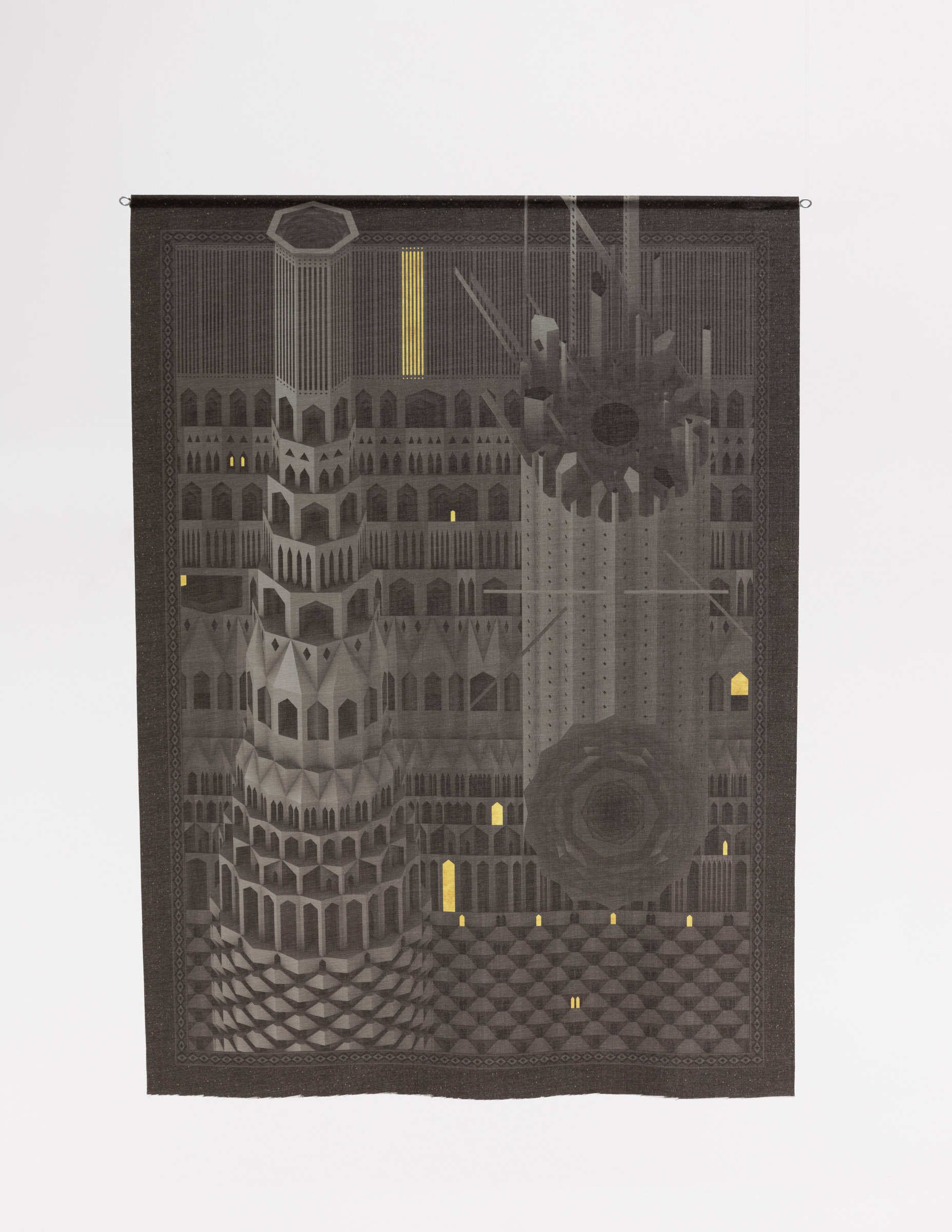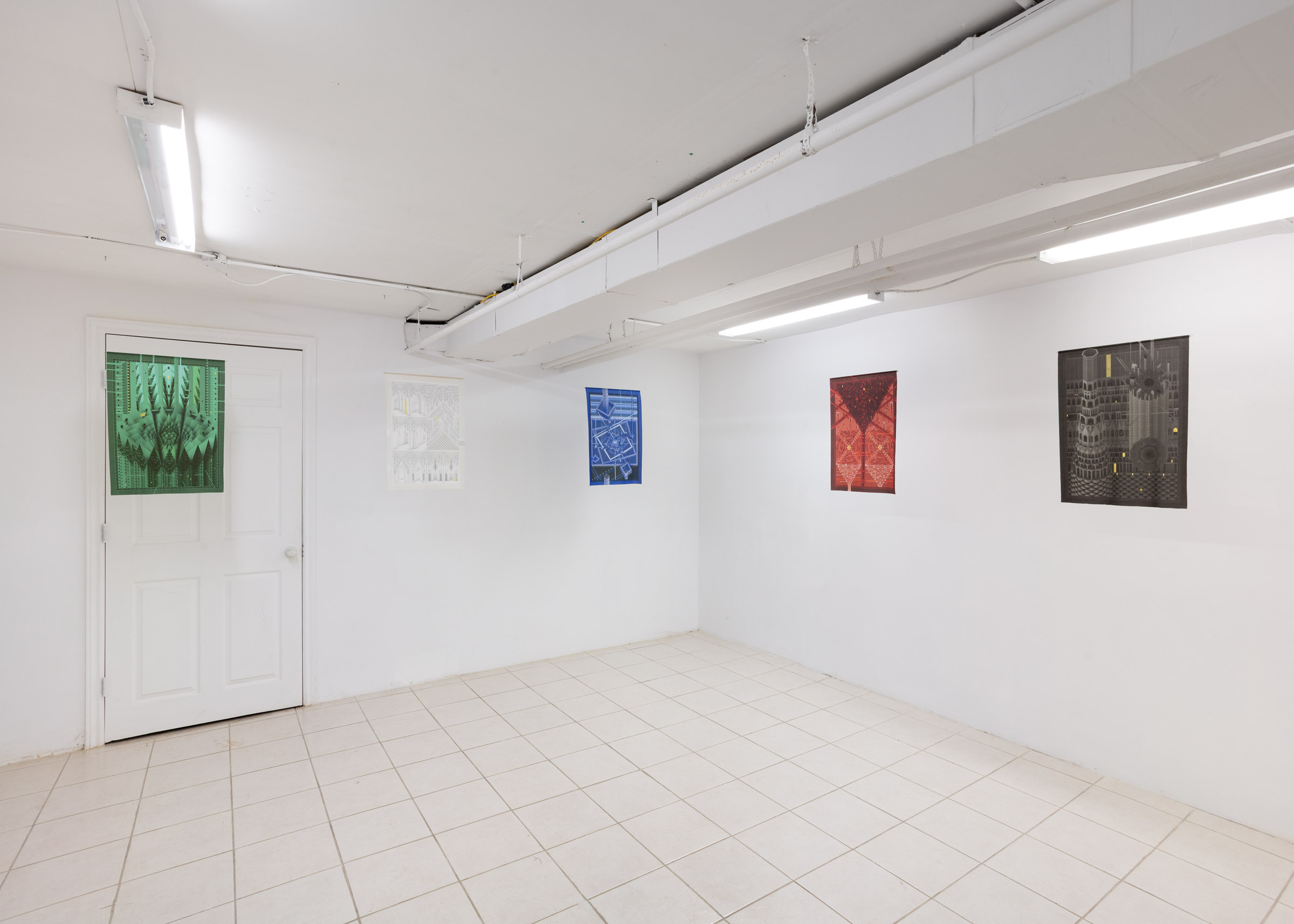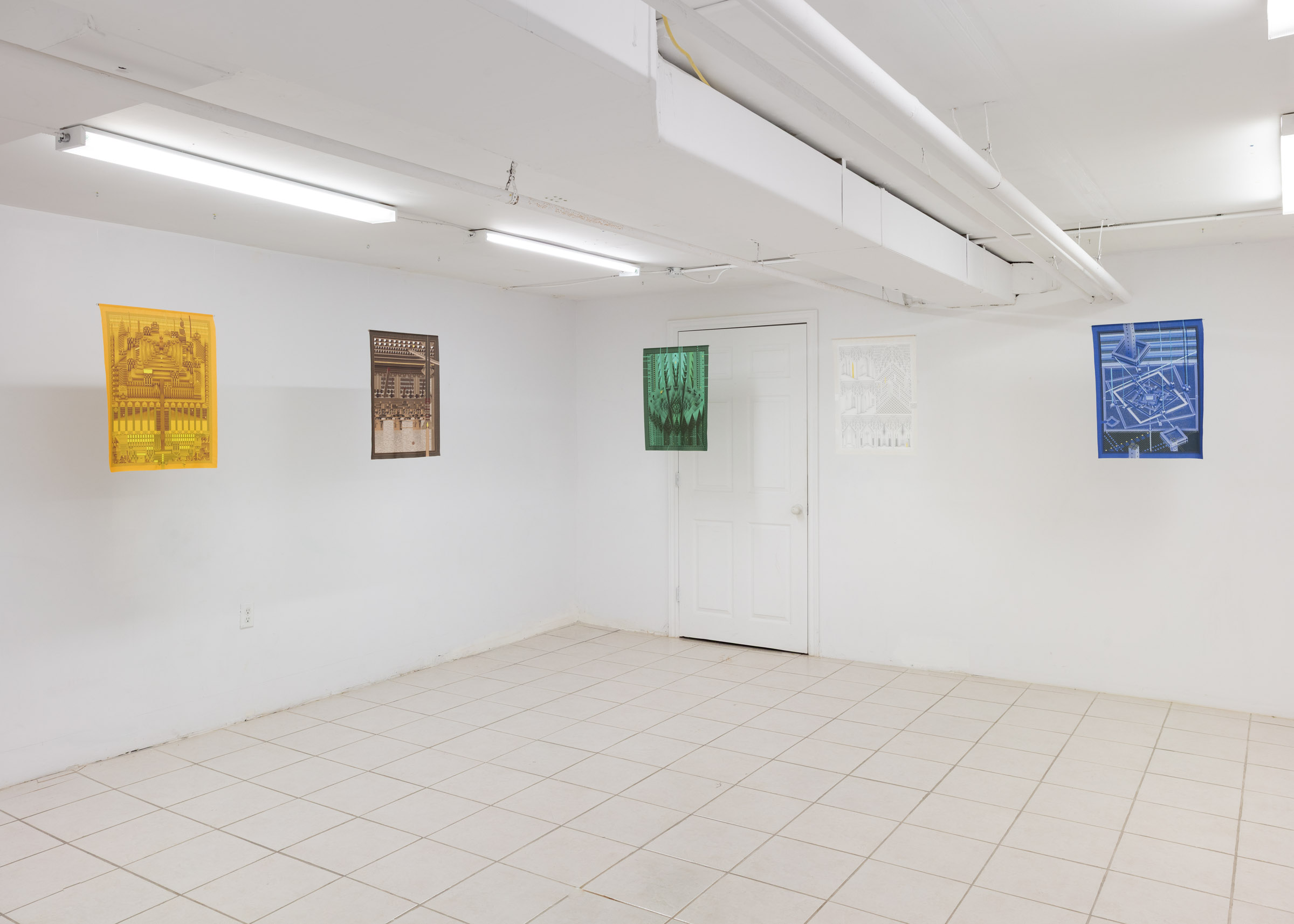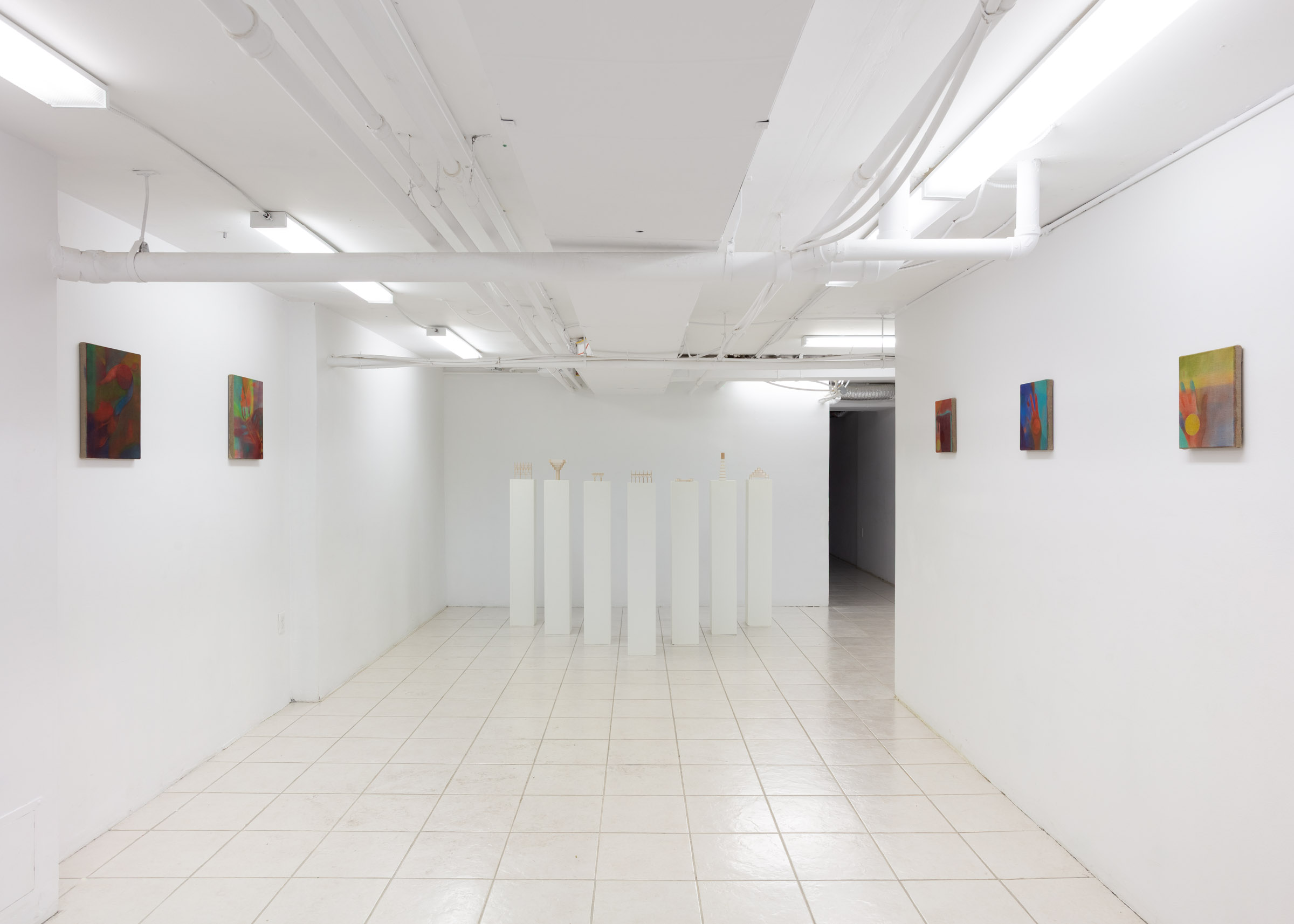Weight of Light
Azadeh Elmizadeh
Arman Azar
September 6 - October 5, 2025
Azadeh Elmizadeh and Arman Azar’s exhibition Weight of Light follows years of conversation and parallel making across media. Literary and textual references to mythology, aesthetics and mysticism of pre-Islamic and Islamic Iran are points of continued return for both artists, approaching and excavating an unfixed past.
Bridging languages, gestures, forms and materials arriving at shifts, distortions, and distant resonances, translation seems central and internalized to Elmizadeh and Azar’s processes. Translation approximates abstraction—it unmoors from the immediate, singular reading to enter spaces of porous meaning and continuous motion. Translation ensures possibility, promise, and loss.
Seeking a sinuous entry into Azar’s work, I revisit Krauss’ Grids. She writes of vertical columns, spatializing stories and “mythemes”. Borrowed from structuralist theory, mytheme is defined as the minimal unit of myth burrowing down into the historical past. Looking up the word in Farsi, Wikipedia cites Esfandiyar’s Eye and Achilles’ Heel as examples of this shared, irreducible and enduring aspect from which myth is constructed. I am brought to Elmizadeh’s work: Can’t See and Eyes Pierced, reference Esfandiyar’s Eyes—his only vulnerable body parts—transmuted and accessed through its many historical iterations. Feathers belonging to the legendary bird Simurq double as arrows, gliding in pairs and aiming for the eyes. Not quite ornamental nor bident, the blinding feathers are allegorical and instrumental to transcending vision.
A copy of a Farsi translation of Benim Adım Kırmızı, Orhan Pamuk’s My Name Is Red, is altered by Azar’s interventions. Resting on negative grids, rows of painted equidistant squares transform text to image. The novel, which explores Ottoman miniaturist workshops and discordant traditions of representation becomes scaffolding for extensions of the story, speaking for and to its polyphonic narrative. Azar reconfigures visual motifs and allows text to peer out, interrupt, and speak occasionally—in affectionate, contemplative and questioning tones:
“they see with celestial vision, not terrestrial eyes?”
The artists’ distinct visual languages share affinities with two additional 12th century texts. Elmizadeh intimates transformative moments from Aql-e Sorkh, (The Red Intellect), an allegorical treatise by Shihab ad-Dīn Suhrawardi, while Azar’s Tracing Apparitions echo painting manuscripts of Haft Peykar (Seven Beauties), Nizami Ganjavi’s epic poem.
Elmizadeh’s signature atmospheric style layers translucencies of bleeding colour and traces returning and doubling motifs. Her four-part Passing through the mountains like a drop of Balsam, seeks “moments of dissolution” in the artist’s own words: where form slips through the fingers, seeping, leaking and crossing boundaries of matter and light.
Azar’s suits of sharp and tenuous sculptures barely touching down, answer to suspended prints of oblique imaginative geometries on fraying threads of sheer. Tracing Apparitions speaks languages of elemental architecture, distilled from anti-perspectival conventions of representation. The series reverberates with inherited architectural forms, carried across historical time and traversing the virtual and material (translation literally derived from latio, meaning carry, and trans meaning across).
Staging encounters between dissenting approaches, the leaking and logical, the infinite and bordered, Weight of Light abounds with eyes, apertures and screens as portals and thresholds for light to pass through.
- Pardiss Amerian
